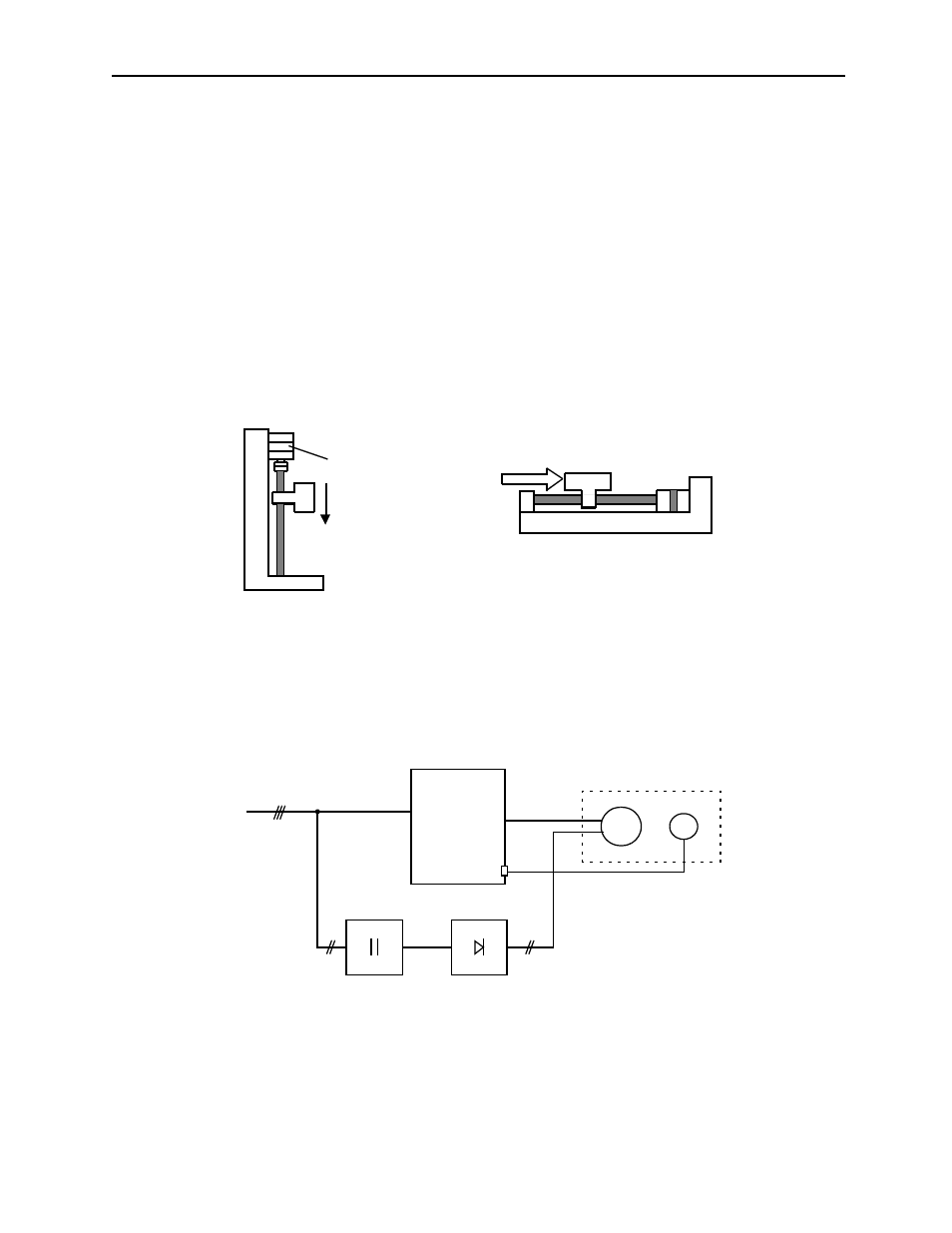2 additional setup procedures in trial operation, 1 servomotors with brakes, 1 servomotors with brakes - 10 – Yaskawa Sigma II Series Servo System User Manual
Page 82: Servomotors with brakes -10

Sigma II User’s Manual
Chapter 4: Trial Operation
4 - 10
4.2 Additional Setup Procedures in Trial Operation
Before starting trial operation, precautionary setup procedures must be followed when
either of two equipment configurations are used. These are delineated in the two
subsequent sections.
4.2.1
Servomotors with Brakes
Use a servomotor with a brake for vertical shaft applications or when external force
must be applied to the shaft to prevent rotation due to gravity or external force
during a power loss.
The servo amplifier uses the brake interlock output (/BK) signal to control the
holding brake operation when using servomotors with brakes.
Note: To prevent faulty operation due to gravity or external force, first make sure that both the servomotor
and holding brake work properly when . When assured that each operates properly, connect the
servomotor to the rest of the equipment to start the trial operation.
The following figure shows wiring for a servomotor with brakes. See 5.4.4 Using
the Holding Brake for details on wiring.
Holding brakes are generally used for vertical load applications or when an external
force must be applied to the shaft to prevent rotation due to gravity or another
external force. Incorrect wiring or application of abnormal voltage to the servo
amplifier output may cause damage to the amplifier and/or the machine. Therefore,
Holding brake
Prevents the
servomotor from
rotating due to gravity.
External
force
Servomotor
Servomotor
•Vertical shaft
•Shaft with external force applied
Power supply
Three-Phase 200V
L1, L2, L3
Magnetic contactor
Single-Phase
24V
DC
CN2
U, V, W
Servomotor with Brake
200V
Brake power supply
SGDH
servo
amplifier
Brake control relay
M
PG